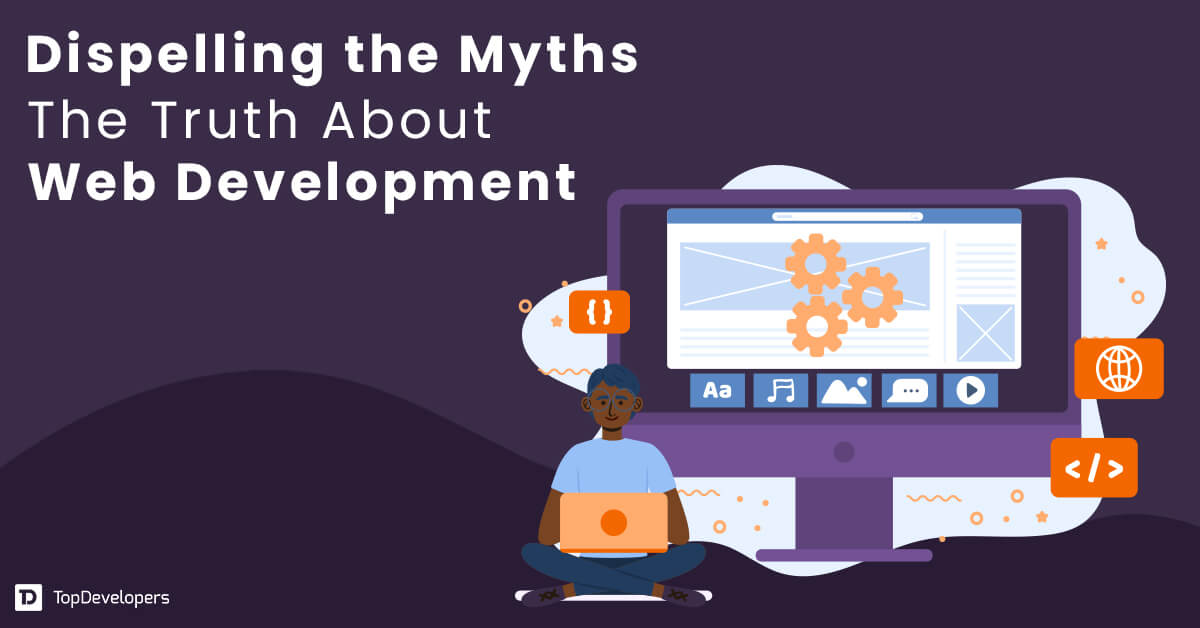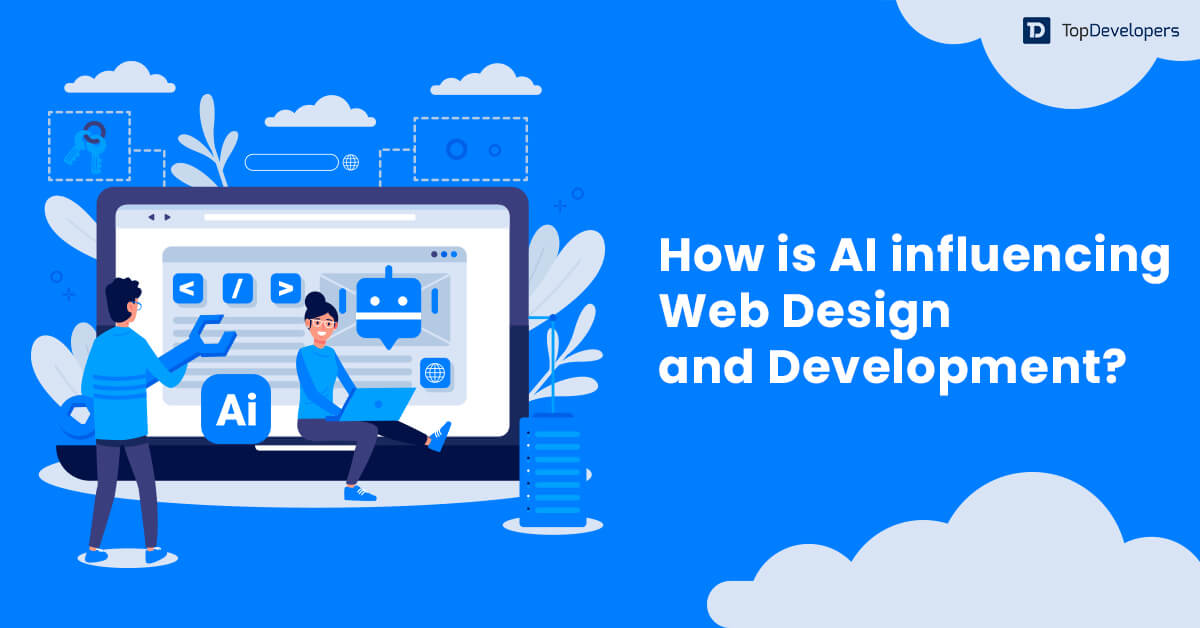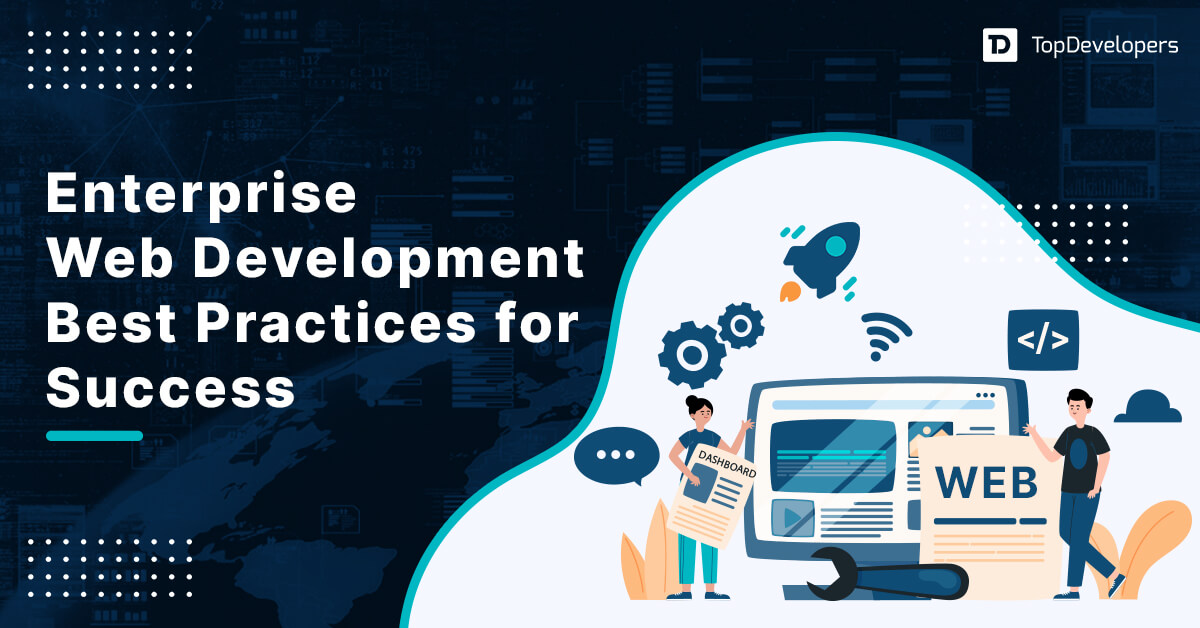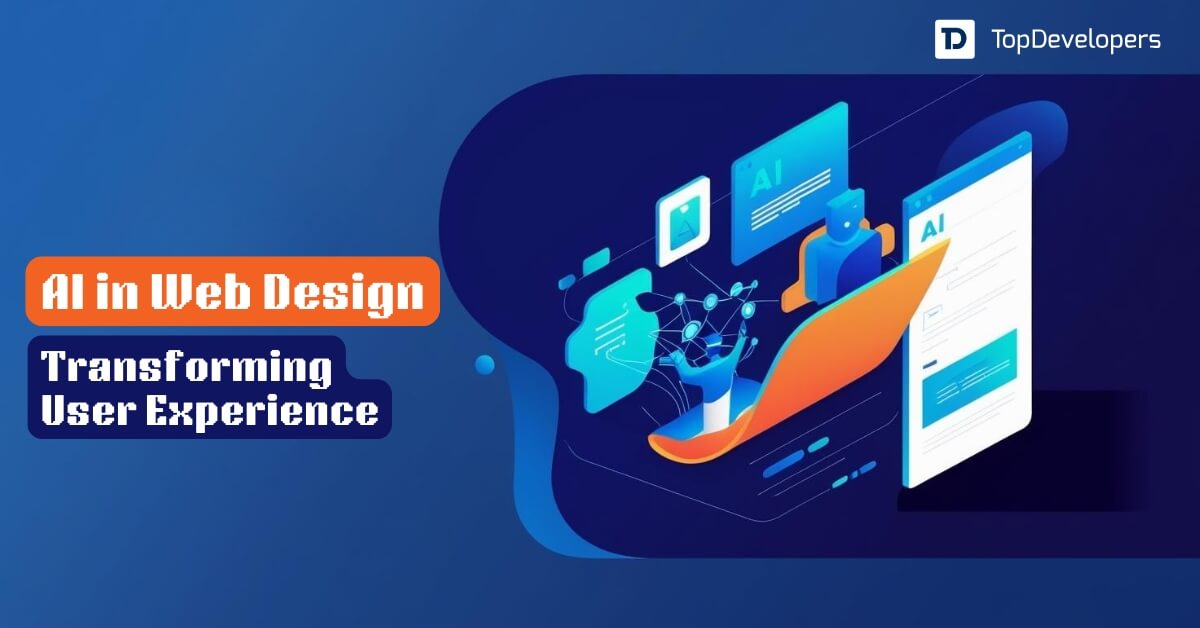
Quick Summary: Web development trends continue to evolve, as have the world of the internet over the years. The businesses keeping an eagle eye on evolvement are thriving while the others remain regressed. The only way to enact changes and incorporate new best practices is to track and gauge the future of web development effortlessly. We have made it easy for you by exploring and suggesting the top trends in web development. They are researched, ensuring the trends will continue to rule throughout 2025 and help you keep up with the website performance. Let’s explore;
Are you running your business online? Are you struggling to keep up with digital success? Do you want to stay ahead of your competitors? You might have plenty of reasons or gaps to explore or find, but the first thing you need to examine is your website or web application; ensure that they are updated according to web development trends. Yes, if you are running your online business website, you need an updated, feature-rich, and user-friendly website on top cutting-edge technologies to meet your tech-savvy needs.
The digital world is changing rapidly, and we witness innovations day in and day out. In fact, over 60% of global traffic now comes from mobile devices, which highlights the importance of responsive design and mobile-first web development. In such an innovative digital space, if your business website is not updated, you are restricting your website to reach your target audiences as your website is not suitable to meet modern users’ needs. Studies show that 75% of users judge a company’s credibility based on its website design, making it crucial to stay updated with the latest web trends. You can meet their expectations and provide a user-friendly website with engaging features when you keep up with the recent web development trends. In this article, we brought incisive details about top trends in web development.
Table of Contents
- Top Web Development Trends 2025
- Accelerated Mobile Pages (AMP)
- Motion UI
- Core Web Vitals
- Voice Search Optimization
- AI-Powered Chatbots
- API-first Development
- Single-Page Applications (SPA)
- 5G and Web Performance
- JavaScript Frameworks
- Mobile-Friendly Web Development
- Headless CMS Architecture
- No-code/ Low code and High Code development
- Data Security
- Blockchain Integration
- Automated Code Review
- Serverless Architecture
- Cloud Computing
- WordPress Development
- Progressive Web Apps (PWAs)
- Edge Computing
Top Web Development Trends 2025
The web is tricky as tech giants continue to come up with new innovative ideas for users. On one hand, it offers more convenience and comfort for users to be handy with technologies and serve their purposes effectively; it creates challenges for businesses and enterprises to keep pace with the trends on the other. With each passing year, we find a new stack of technologies or added features in the existing one. So, we must keep exploring the web development trends and find out which technology better serves our customers’ needs.
Let’s Explore the Trends
Accelerated Mobile Pages (AMP)
Accelerated mobile pages are not a new trend. It has been for many years. AMP is gaining momentum nowadays because it allows users to browse products, services, or any website without needing mobile apps through their smartphones. Initially, it was started by Google and Twitter, gradually becoming the trend. If you are building a website and do not want to build mobile apps, consider an accelerated mobile page, which can be a good option.
As mobile browsing continues to grow, AMP offers businesses a way to meet the increasing demand for fast and seamless mobile experiences. With users expecting websites to load almost instantly, AMP-enabled pages can load up to four times faster than standard mobile pages, which directly improves user retention and engagement. For businesses looking to optimize their website without developing separate mobile apps, AMP offers a streamlined solution that enhances mobile SEO, reduces bounce rates, and provides a smoother experience for visitors on the go.
Motion UI
Motion UI is part of design when you build the website; it must be user-friendly and easy to use so that your users can easily engage with it. Motion UI generally helps designers create a gazing interface and user interface with the help of animation and transitions. With users becoming more accustomed to visually rich experiences, Motion UI has emerged as a powerful tool for improving user engagement. It enables subtle animations that guide users through a seamless browsing experience without overwhelming them.
Incorporating motion elements like hover effects, page transitions, and scrolling animations can significantly enhance interactivity, making websites more engaging and memorable. Moreover, Motion UI is known to boost conversion rates, as interactive elements make users feel more connected to the website, encouraging actions like clicking buttons, completing forms, and making purchases.
Core Web Vitals
Core Web Vitals (CWV) are crucial elements to ensure how users interact with your website. Core web vitals are the combination of three metrics data: speed, interactivity, and visual stability. Building a user-focused webpage is not enough; it requires you to rank your website in Google’s search engine. These CWV metrics are now essential for SEO, as Google uses them as part of its ranking algorithm. This means that optimizing for Core Web Vitals not only enhances user experience but also directly impacts your search engine visibility.
This CWV means core vitals are crucial ranking factors. It was first introduced in 2021, and in 2022, it was fully rolled out. As search engines prioritize websites that offer smooth, fast, and stable user experiences, meeting Core Web Vitals standards can improve your site’s performance and decrease bounce rates. Websites that excel in these areas tend to have better user retention, increased engagement, and improved overall satisfaction.
Voice Search Optimization
Did you know half of the total searches are done online through voice? A study by Comscore said in 2022. Even if you ask modern experts, they will suggest you implement voice search so that it would allow your users to ask questions and get answers accordingly from the very beginning. With the rise of voice assistants like Siri, Alexa, and Google Assistant, optimizing for voice search has become more important than ever. You must optimize your website with keywords and phrases for voice assistant searches.
This is very much in trend, and you must consider the strength as the new normal now. As voice searches tend to be more conversational, it’s essential to target long-tail keywords and natural language queries that users are likely to speak aloud. Also, ensuring your content is concise and direct can improve its chances of being featured as a voice search result. Voice search is not just a trend; it’s an essential aspect of providing a seamless user experience in an increasingly voice-driven world.
AI-Powered Chatbots
Running an online business without customer support can be of no use. You must have a dedicated support team who would answer the queries of customers. You do not need any human to carry out the task or help you with customer support activities. With advancements in AI and machine learning, you can now rely on AI-powered chatbots to provide instant, around-the-clock support without the need for human intervention.
AI-powered chatbots are crucial to helping you with customer support activities. They can handle a wide range of customer queries, from simple FAQs to more complex troubleshooting, and provide personalized responses based on user behavior. You can implement your custom or self-chatbot and help your customers get assistance when needed. Additionally, AI chatbots can help reduce response time, improve customer satisfaction, and increase efficiency by handling high volumes of requests simultaneously.
API-first Development
If you want to build a website to improve productivity, boost innovation, and meet user needs, then API’s first development approach is the one you need to think about. API-first development is a long-existing web development trend that enables designers and developers to focus on the Application Programming Interface (API). That means API is the focal point before the designing and development process. By prioritizing APIs, businesses can ensure that their website or application is scalable, flexible, and capable of integrating with multiple platforms and services seamlessly.
You need to connect with a web development company that follows this API-first development principle. An API-first approach allows for easier collaboration between development teams, as it separates the frontend and backend development processes, streamlining workflows and reducing time-to-market. This approach also enhances the ability to support new devices, platforms, and third-party integrations, making it a future-proof strategy for modern web development.
Single-Page Applications (SPA)
Single-page applications are ruling the roost and are one of the most lucrative trends in web development now. However, whether it is a good option for you or you should go with this SPA model, you need expert support. Modern customers are patientless and they need faster results. SPA is a JavaScript-based web application that allows customers to explore pages in a browser with lightning-fast speed. SPAs work by loading a single HTML page and dynamically updating content as users interact with the app, significantly improving speed and performance compared to traditional multi-page websites. You know how Facebook works as this is an example of SPA.
You can also opt to connect with the development company and inquire into the matter. As far as the SPA trend for web development is concerned, more businesses are considering this trend to provide faster, more convenient, and more efficient services to their users. Since SPAs eliminate the need for full-page reloads, they offer a smoother user experience, particularly for mobile users. Some of the top examples of SPA web development include Facebook, Google Maps, Gmail, Twitter X, Google Drive, and GitHub. With SPAs, businesses can reduce server load, streamline development, and provide a more app-like experience for their customers.
5G and Web Performance
With the advent of 5G technology, the landscape of web performance is set to change dramatically. 5G promises faster internet speeds, lower latency, and greater reliability, making it possible to deliver web experiences that were previously not possible on mobile devices. Websites will load faster, multimedia content will stream seamlessly, and interactive applications will perform with near-instant responsiveness.
For web developers, this shift means optimizing websites to take advantage of 5G’s capabilities. As mobile browsing continues to surpass desktop traffic, ensuring your site is optimized for 5G networks will be crucial for offering smooth, high-performance experiences on smartphones and tablets. With faster internet speeds, users will expect more interactive and dynamic content, pushing developers to adopt richer, more engaging technologies like high-definition videos, 3D graphics, and augmented reality (AR).
JavaScript Frameworks
As modern businesses need faster, more efficient, and more convenient websites, JavaScript frameworks are the new growing trend. JavaScript frameworks are used everywhere now. Modern websites are required to be faster and more efficient. Keeping these needs in mind, websites need lightweight, robust, and more efficient frameworks like React.js, Vue.js, Angular.js, and others. These frameworks help developers create highly interactive user interfaces with minimal coding, improving development speed and overall performance.
In the coming years, more JavaScript frameworks will be in the Arena. React.js, for instance, has gained massive popularity due to its flexibility and component-based architecture, while Vue.js is known for its simplicity and gentle learning curve. You need to prepare yourself in advance. As JavaScript frameworks continue to evolve, staying updated with the latest tools and trends will help businesses remain competitive and ensure their websites are scalable, maintainable, and user-friendly.
Mobile-Friendly Web Development
More than half of the world’s population uses a smartphone. If you are not using a mobile-first strategy in your business marketing campaign, you are missing 60% of your potential increase and customers. Mobile-friendly web development is the need of the hour. With mobile internet usage now surpassing desktop usage globally, businesses can no longer afford to overlook the mobile experience. You need to create a web application that can run on mobile devices such as smartphones and provide a valuable user experience.
Mobile-friendly development focuses on creating responsive websites that adjust seamlessly to any screen size, providing users with fast loading times, smooth navigation, and clear readability. This is essential not only for user engagement but also for SEO, as search engines like Google prioritize mobile-optimized websites in their rankings. A mobile-first approach helps businesses stay ahead by improving accessibility and ensuring that users have a consistent experience across all devices.
Headless CMS Architecture
Headless CMS architecture has been one of the fastest-growing web development trends in recent years. It’s a content management system that provides a vivid content presentation from separate storage. It’s a part of decoupled CMS, or you can say the subset of CMS that works efficiently without a fixed front end. The flexibility of a headless CMS allows businesses to deliver content across multiple platforms, from websites to mobile apps, smart devices, and even IoT applications, making it an ideal choice for omnichannel strategies.
You need to keep this trend in your list as it will provide better benefits, such as flexibility, using different coding and languages, and connecting via API. Headless CMS enables faster website loading times and provides a scalable, future-proof solution as it allows developers to focus on the frontend experience without being restricted by backend constraints. This flexibility also allows for seamless integrations with various third-party applications, making it a great choice for businesses looking to innovate and scale their digital presence quickly.
No-code/ Low code and High Code development
No-code, low-code, and high-code are the latest trends. The choice of low and no-code depends on the type of website and the goal you want to achieve from it. For example, building a website that is not so customer-focused and will receive minimum traffic, low-code, and no-code development could be the choice. For no-code, you can find plenty of website builder tools that are good for creating a standard website in no time. No-code tools allow users with minimal technical expertise to quickly build websites or apps, making it an ideal option for small businesses or personal projects looking for rapid deployment.
Apart from this, if you want to use a little code and build a scalable business website, low-code is the option for you. Low-code platforms provide a balance between ease of use and flexibility, allowing businesses to create customized solutions with minimal development effort. However, if you have some big plans with scalability in mind or want to develop custom applications, high-code development is the option for you. High-code development offers complete control and customization, allowing for the creation of complex, feature-rich applications that can scale with your business needs. Look for the trend, explore the options, and choose what best fits your requirements.
Data Security
Security is going to be the next development trend. Every website has a significant amount of crucial data. That includes customer data, company data, and other information. As cyber threats continue to evolve, data security has become a critical aspect of web development, especially as businesses collect more sensitive information. Keeping sensitive data security needs in mind, businesses focus more on building safe and secure websites.
It will not just be about selecting the robust technology but also about integrating security plug-ins. Adopting best practices like SSL certificates, encryption, and multi-factor authentication (MFA) ensures that sensitive data is protected from unauthorized access. Additionally, regular security audits and vulnerability assessments are essential to identify and address potential risks before they become a serious threat. As businesses continue to store more personal and financial information online, a strong focus on data security will be essential for maintaining customer trust and meeting compliance regulations.
Blockchain Integration
Blockchain technology, known for its secure and transparent nature, is making its way into the web development world. Incorporating blockchain into your web applications can provide decentralized solutions for data storage, secure transactions, and user authentication, offering users enhanced trust and privacy.
As businesses and developers strive to provide safer, more transparent digital experiences, blockchain ensures that data is immutable and cannot be tampered with. One of the key benefits is the decentralized data management it provides, which eliminates the need for a centralized database and reduces the risk of data breaches. The increasing demand for Web 3.0 applications, which rely on decentralized web structures, makes blockchain integration a must for businesses looking to future-proof their platforms. Whether for secure payments, supply chain transparency, or identity management, blockchain will continue to evolve as a key trend in web development.
Automated Code Review
Even though there are many tools for code review, many web development companies are considering implementing automated code review systems. It will strategize source code analysis, find bugs, identify security vulnerabilities, and check with the coding standard violations. Automated code review tools not only streamline the review process but also ensure consistency and accuracy by eliminating human error in identifying critical issues.
It’s a must to be in trends. These tools use AI and machine learning to detect patterns and predict potential vulnerabilities, allowing developers to address them early in the development lifecycle. If you offer web development services or hire web developers for your project, this trend will significantly impact 2025. Integrating automated code review into your workflow not only enhances code quality but also reduces the time and effort needed for manual reviews, improving overall productivity and delivery timelines.
Serverless Architecture
Serverless architecture has been the talk of the town for a couple of years. It’s a new normal as everyone is migrating and shifting their on-premise system to the serverless architecture. By eliminating the need for businesses to manage their own servers, serverless architecture reduces operational overhead, allowing companies to focus more on code development and business logic.
It’s generally a new cloud computing execution model that enables businesses to utilize cloud machine resources provided by cloud service providers. This approach scales automatically based on demand, meaning businesses only pay for the computing power they actually use, which helps reduce costs. Serverless also improves flexibility, as developers can focus on writing application code without worrying about infrastructure management. As more companies embrace cloud-native solutions, serverless architecture is expected to continue growing due to its efficiency, scalability, and reduced infrastructure management.
Cloud Computing
Cloud computing is the same as serverless architecture but with a few differences. In cloud computing, businesses get access to networks, servers, storage, applications, and services without having a physical presence in that system. Cloud computing offers the flexibility to scale resources up or down based on demand, allowing businesses to optimize costs and performance. The cloud computing service providers will manage these resources.
Cloud computing is not new; it has been around the tech arena since 2006, almost two decades. But, it has become the talk of the town recently, and it’s going to be very much in trend. The increased adoption of cloud solutions has been driven by the growing need for remote work solutions, data storage, and enhanced collaboration tools, especially in the wake of the pandemic. Public, private, and hybrid cloud models offer businesses various options depending on their specific needs for security, flexibility, and compliance. As cloud computing continues to evolve, it is expected to play a pivotal role in powering innovation, supporting big data analytics, and enabling the rise of AI and machine learning technologies.
WordPress Development
WordPress is redefined, and it is offering better services than most CMSs. According to online resources, WordPress alone powered over 45% of all websites in 2023. This dominant market share demonstrates WordPress’s flexibility, ease of use, and ability to cater to both beginners and advanced developers. The trend has been consistent for more than a decade and will continue to rock for years to come.
With continuous improvements, including advanced custom fields, enhanced security features, and better integration with third-party tools, WordPress is more powerful than ever. The introduction of the WordPress block editor (Gutenberg) has also significantly improved the user experience, making content creation more intuitive. Additionally, the growing ecosystem of plugins and themes provides businesses with endless customization options, ensuring that WordPress remains a top choice for building websites across industries.
Progressive Web Apps (PWAs)
Progressive web apps (PWAs) are another trend that will cause a web development boom in 2025. The application is built using web technologies, like React, Angular, and others, but runs on both desktop and mobile. PWAs combine the best features of websites and native mobile apps, providing a fast, reliable, and engaging user experience, even with poor internet connections. It will have a more significant impact on how businesses do their online trades.
PWAs will be a boon for startups as they can build PWA applications cost-effectively. Since PWAs do not require separate development for iOS and Android apps, businesses can save time and money on development and maintenance. PWAs are also discoverable through search engines, can be installed on the home screen like native apps, and offer push notifications, making them a great option for businesses looking to improve user engagement without investing in expensive app development.
Edge Computing
Edge computing will be the next big trend in web development. It will significantly impact security software more as edge computing devices and computers are closer to users. By processing data closer to the source of generation (at the “edge” of the network), edge computing reduces latency and enhances the performance of real-time applications. For example, security cameras, safety devices, sensors, and others will witness a boom in the coming years and do edge computing. This will enable faster data processing, improved security, and more efficient use of bandwidth.
Keep a close eye on this web development trend; it will remain ahead of the curve. Edge computing will play a pivotal role in powering the Internet of Things (IoT) devices, autonomous vehicles, and AI-driven applications, all of which require low latency and high data processing speeds. As businesses increasingly rely on real-time data analytics and device interconnectivity, edge computing will become crucial for supporting scalable, high-performance digital solutions.
Final Thoughts
Web development trend ensures businesses never lag and remain competitive in the tech arena. Knowing and understanding trends will help companies decide and build better digital products that match the pace of digital innovation. Even if you have existing websites or web applications, web development trends will continue to help you evolve with the new market trends. The trends for web development we have mentioned here are crucial. But, for better output, you need a quality development partner. At TopDevelopers, we continue to help organizations, such as startups, enterprises, and other businesses, find the best web development companies in the directory listed with top-rated companies with highly authentic reviews and a range of portfolios.
 Avantika Shergil
| Dec 5, 2024
Avantika Shergil
| Dec 5, 2024
Avantika Shergil is a technology enthusiast and thought leader with deep expertise in software development and web technologies. With over 8 years of experience analyzing and evaluating cutting-edge digital solutions, Avantika has a knack for demystifying complex tech trends. Her insights into modern programming frameworks, system architecture, and web innovation have empowered businesses to make informed decisions in the ever-evolving tech landscape. Avantika is passionate about bridging the gap between technology and business strategy, helping businesses build customized software and website, and understand about different tools to leverage effectively for their ventures. Explore her work for a unique perspective on the future of digital innovation.








